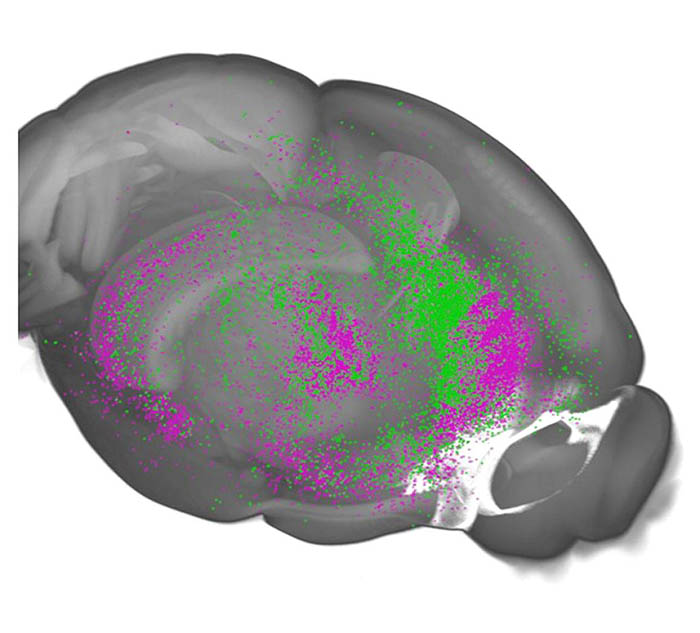Researchers identify brain hub with key role in learned response to direct and indirect threats
NIH-supported study in mice could inform treatments of trauma- and stress-related psychiatric conditions
Scientists have identified an area within the brain’s frontal cortex that may coordinate an animal’s response to potentially traumatic situations. Understanding where and how neural circuits involving the frontal cortex regulate such functions, and how such circuits could malfunction, may provide insight about their role in trauma-related and stress-related psychiatric disorders in people. The study, led by scientists at the National Institute on Alcohol Abuse and Alcoholism (NIAAA), a part of the National Institutes of Health, was published in Nature.
“Experiencing traumatic events is often at the root of trauma-related and stress-related psychiatric conditions, including alcohol use disorder (AUD),” said the study’s senior author, Andrew Holmes, Ph.D., senior investigator in NIAAA’s Laboratory of Behavioral and Genomic Neuroscience. “Additionally, witnessing others experience traumatic events can also contribute to these disorders.”
In animal models of stress and trauma, learning about potential sources of threat by observing how others deal with danger can be an effective way to avoid harm. Understanding the differences in how the brain processes direct experience of a threat compared to observing another’s response to a threat may shed light on factors that predispose humans to trauma- and stress-related psychiatric disorders.

Diagram of mouse prefrontal cortex showing neural projections to the midbrain (purple) and the amygdala (green), pathways involved in learning about threat.
This page was last updated on Monday, February 12, 2024